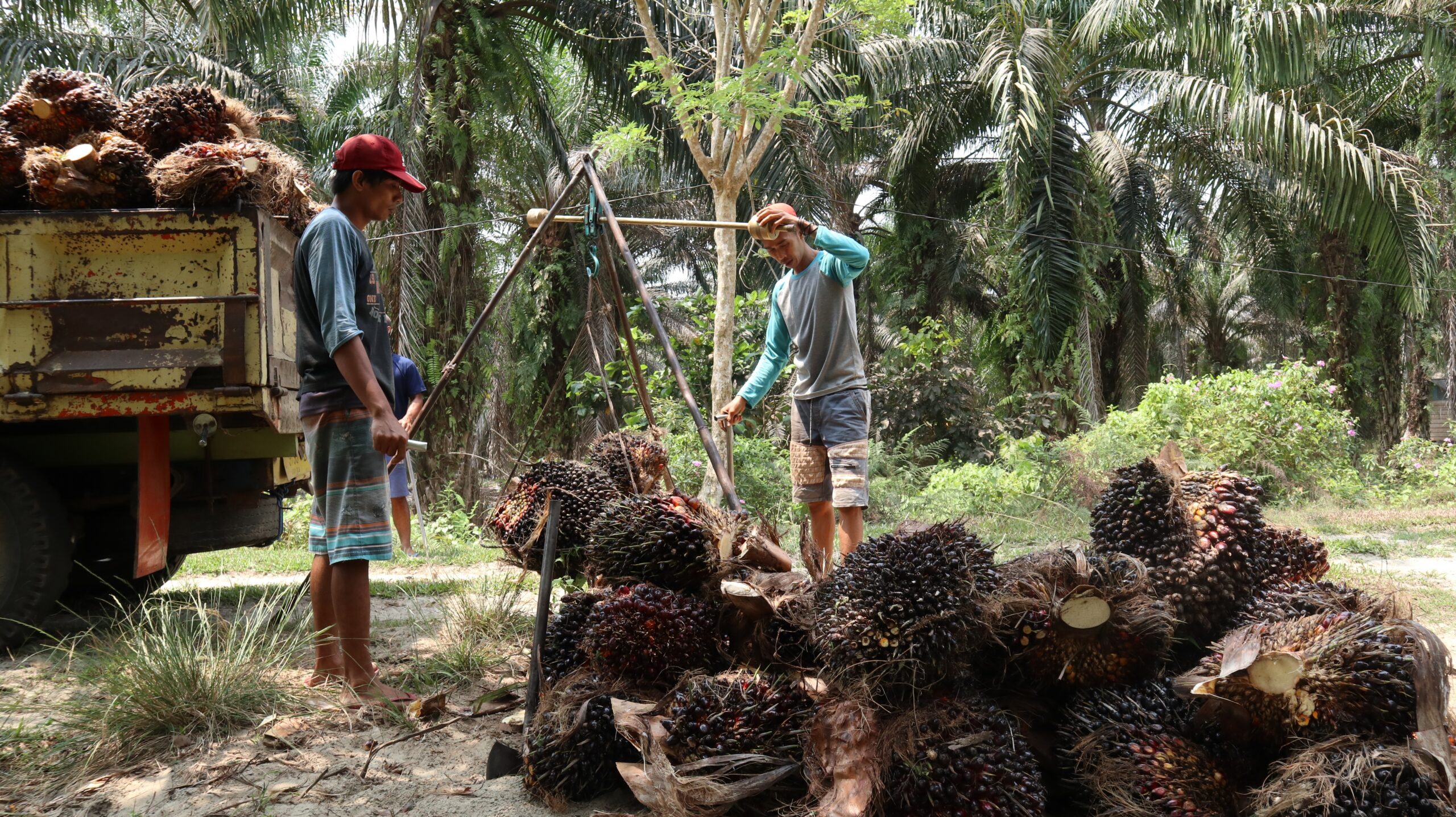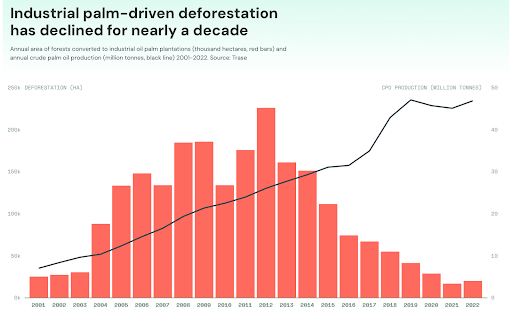-
A Decade of Progress on Palm Oil Deforestation at Risk in Indonesia
Indonesia is the world’s largest producer and exporter of palm oil, an ingredient used globally in a huge variety of food and household products from peanut butter to shampoo. Yet it is also an important driver of deforestation and contributor to climate change and biodiversity loss. Over the past 20 years, the expansion of palm oil plantations has contributed one-third of the total loss of old-growth forests in Indonesia (around 3 million hectares).
Palm oil production contributes significantly to Indonesia’s climate impact due to plantations on carbon-rich peatlands. Its palm oil sector emits around 220 million tonnes of greenhouse gasses per year – almost a fifth of Indonesia’s total annual emissions in 2022.
Over the past decade, Indonesia has achieved a remarkable reduction in deforestation for palm oil production. In 2018–2022, deforestation for palm oil was 32,406 hectares per year (the size of 60,664 American football fields) – only 18% of its peak a decade earlier. Importantly, deforestation has fallen during a period of continued expansion of palm oil production.
Our analysis of the latest data for Trase, a non-profit organization that specializes in research on commodity-driven deforestation, shows this achievement is at risk. Data for 2022 shows an 18% increase in deforestation linked to palm oil, though it remained lower than all previous years analyzed except 2021. (See figure).
The forest-rich provinces of Kalimantan on Indonesian Borneo have been hardest hit, accounting for 72% of all deforestation for palm oil in Indonesia in 2018–2022. The island of Sumatra saw a 3.7-fold increase in palm oil deforestation in 2022 compared to 2020.
The uptick could be due to growing demand for palm oil from China and for domestic use. China recently passed the European Union (EU) and India to become the largest importer of Indonesian palm oil, increasing its market share from 11% of exports in 2013 to 14% in 2022. Indonesia’s domestic consumption has also increased from 32% of production in 2018 to 44% in 2022, of which over half is used to make biodiesel and oleochemicals, driven by changes in government policy.
Our analysis shows that Indonesia, China and India tend to source palm oil from supply chains with comparatively higher rates of deforestation exposure. We at Trase estimate that these markets tend to rely on palm oil with twice the per-tonne deforestation exposure of exports destined for export to the EU. This means these three countries account for 75% of all of Indonesia’s palm oil deforestation exposure.
Further data and research is needed to be sure whether this is the end of progress on reducing deforestation linked to palm oil production in Indonesia. But the early warning signs mean policymakers need to take note and consider future action.
For further information about Indonesian palm oil exports and deforestation, please visit the Trase website.
Jason Jon Benedict is a geospatial data specialist and researcher at University of California, Santa Barbara. He started collaborating with Trase in 2018 and works on Indonesian supply chains. Previously, Jason was the Data Analytics and Visualization lead at The Forest Trust (now Earthworm Foundation) focusing on geo-data management, supply chain mapping, and data collection support for field assessments and smallholder engagement.
Robert Heilmayr is an interdisciplinary land system scientist at University of California, Santa Barbara with expertise in environmental economics and remote sensing who started collaborating with Trase in 2018. Robert works on supply chain mapping and sustainability research on the Indonesian palm oil and wood pulp sectors and is also a member of the Trase Scientific Advisory Committee.
Lead Image Credit: Bengkulu, Indonesia. 15 October 2023: oil palm farmers weighing oil palm fruit. Photo courtesy of ferrys arifan/shutterstock.com
Figure Credit: Figure courtesy of Trase
Sources: Trase Earth
 A Publication of the Stimson Center.
A Publication of the Stimson Center.









